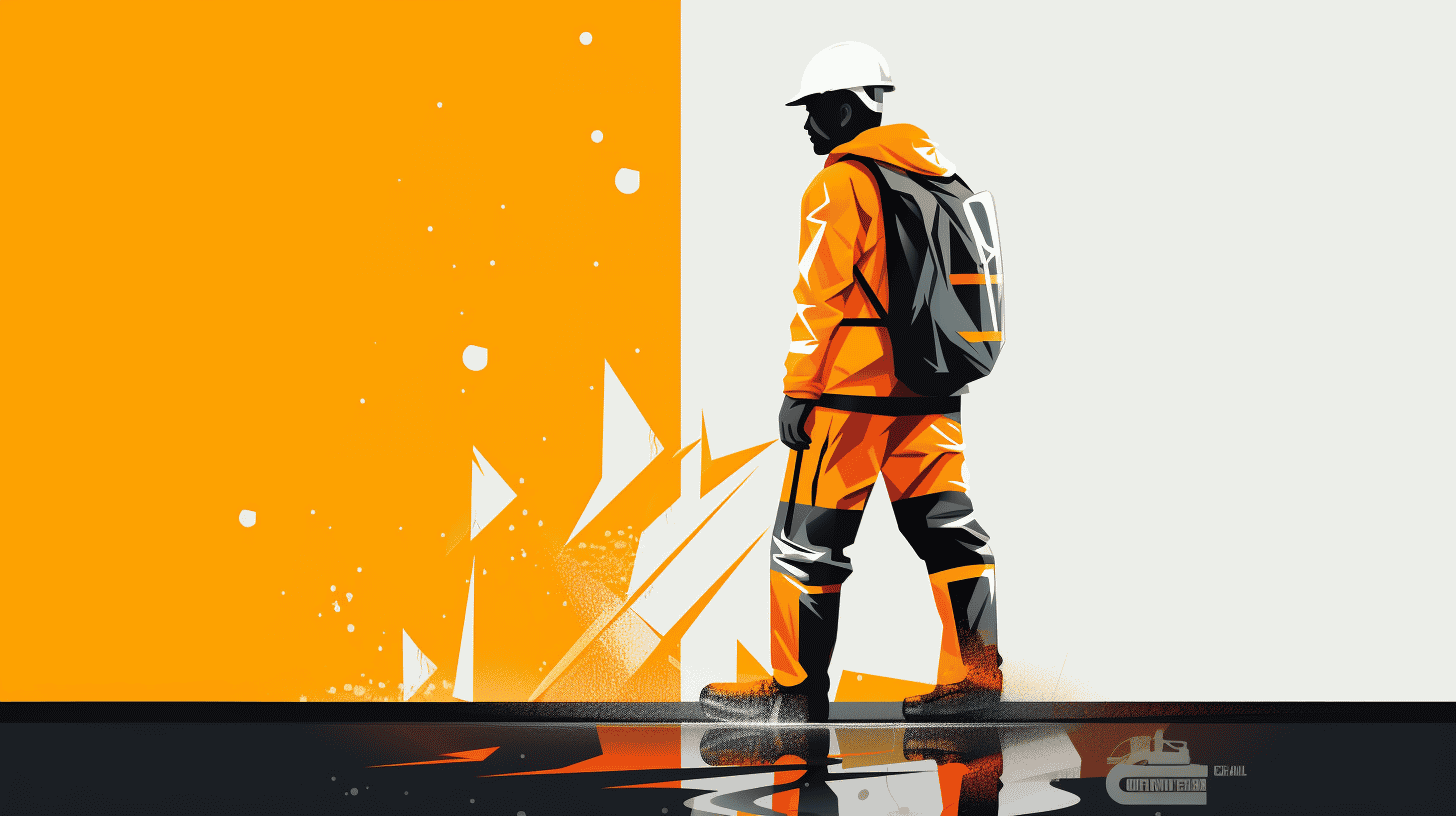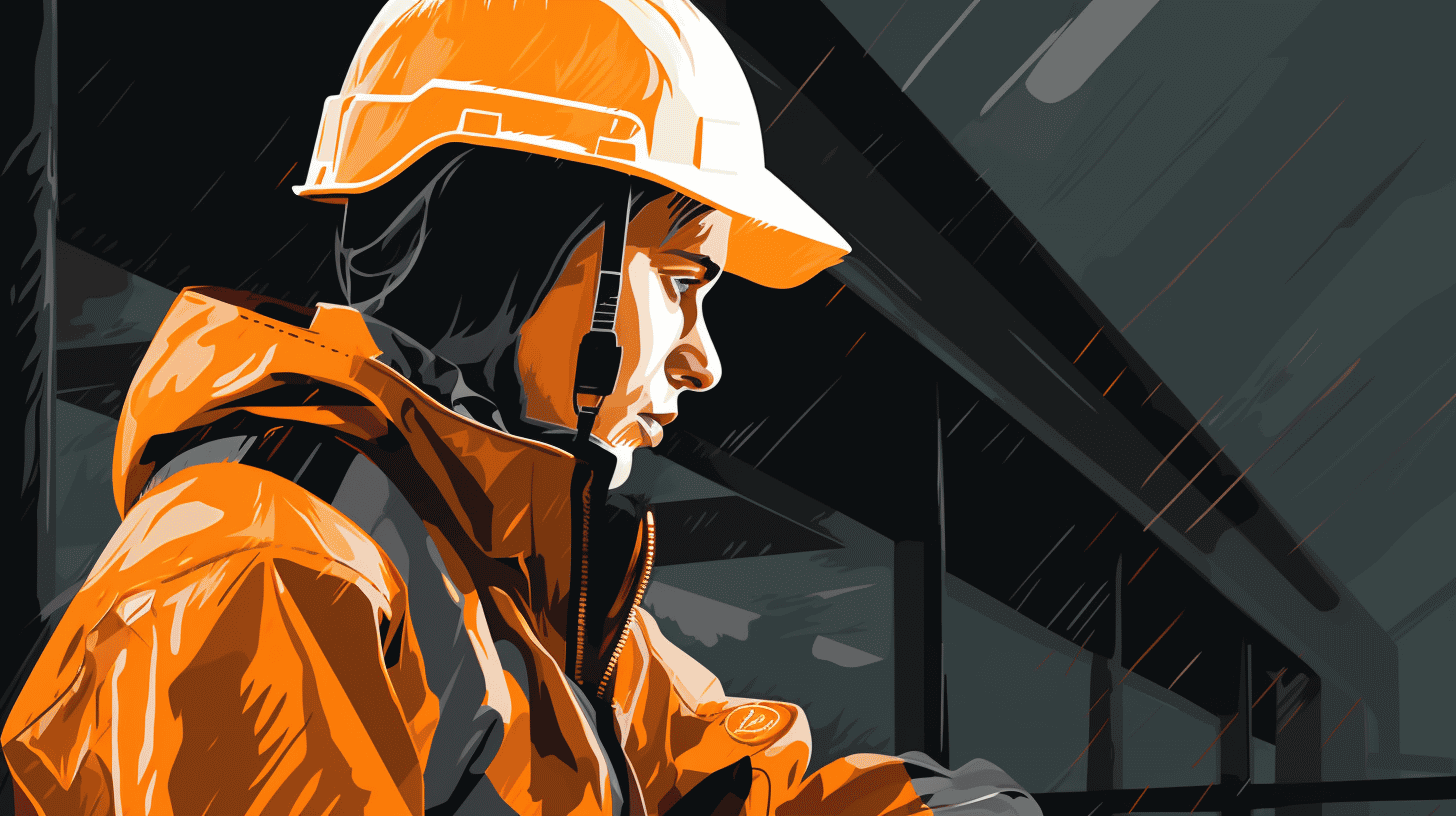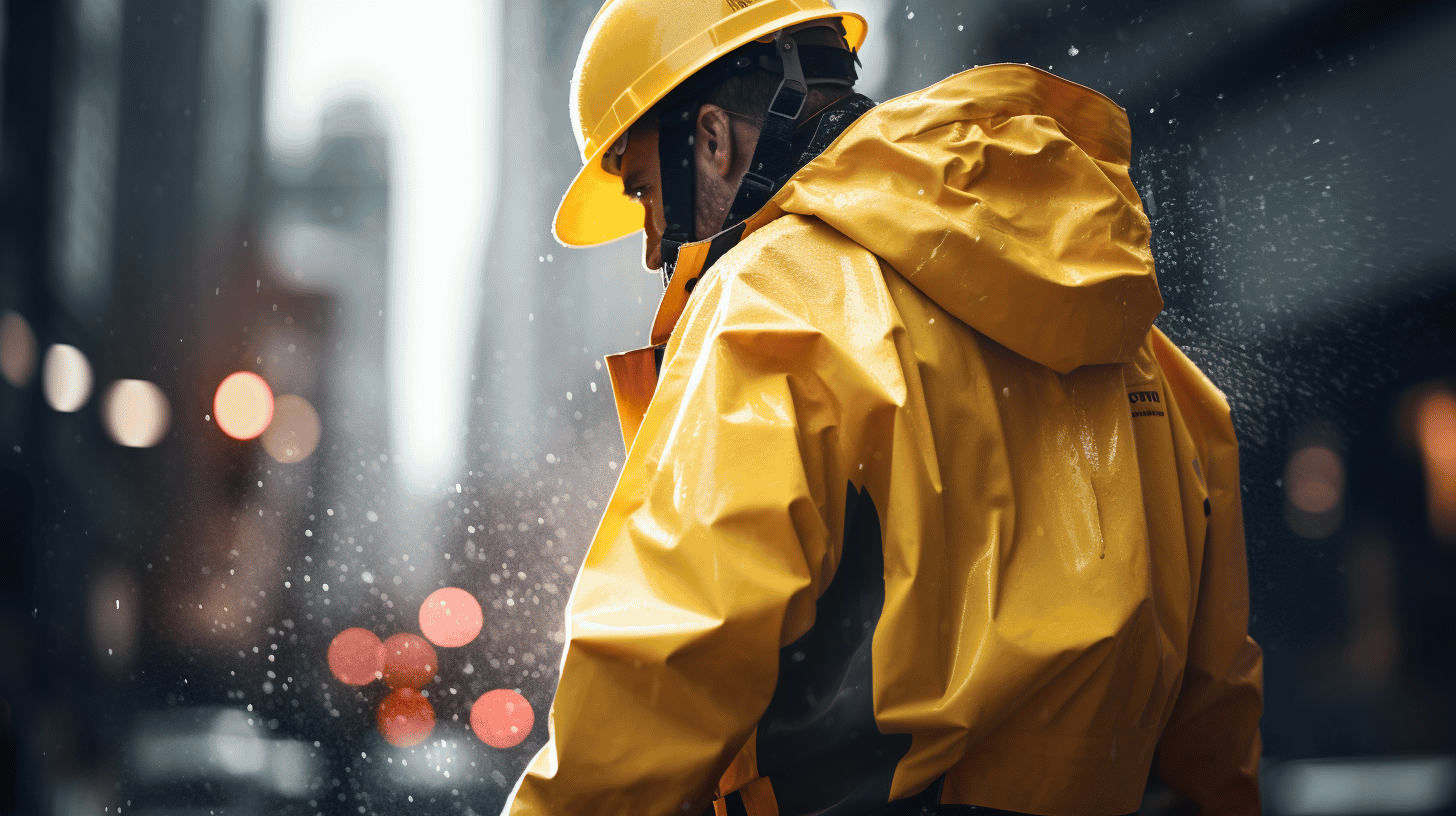Understanding Construction Work Environment
In the fascinating world of construction, an undeniable truth prevails: the work environment matters. It's more than just scaffolding and machinery, more than cranes soaring through the sky, glittering under the sun, and more than the construction crew bustling around in their hard hats. An integral part of a project's success hinges on an element that is often overlooked but nevertheless paramount: weather.
The Role of Weather in Construction
Weather plays a surprisingly significant role in construction projects. From planning and execution to safety measures and completion, the impacts of weather elements are far-reaching, affecting all aspects and phases of construction.
- Temperature: Extreme temperatures, whether hot or cold, could have adverse effects on the workers' productivity and safety. Moreover, they can also affect the drying and curing of materials, the operation of machinery, and overall construction timeline.
- Wind: While a light breeze is generally harmless, strong gusts of wind can be quite problematic on a construction site, causing safety hazards and potentially damaging construction equipment and materials.
- Sunlight: Good lighting is crucial for the safe and efficient progression of construction projects. That's where sunlight comes in. However, excessive sunlight can lead to heat-related illnesses among workers.
- Rain/Snow: Not only can rain or snow cause scheduling delays, but it can also pose safety risks due to slippery conditions and, of course, impact the quality of certain construction materials, such as raw wood or cement.
Effects of Rain on Construction Projects
Rain, in particular, is perhaps one of the most influential weather factors in construction. Its effects are quite profound and far-reaching. Noticeably, rain can cause considerable delays in construction schedules. As many tasks can’t be performed during rain, schedules need to be adjusted accordingly, often leading to cost overruns.
Moreover, rain can cause serious harm to the construction site itself. Water saturation might lead to structural instability, causing damage to the materials and even compromising the integrity of the structure. In severe cases, remedial measures may be needed, such as redesigning, rebuilding, or reinforcing parts of the project.
But apart from the physical and financial impacts, rain also has a substantial effect on worker morale and productivity. Imagine working in soggy conditions, in soaked clothing and shoes. It's essentially a recipe for a reduction in morale, productivity, and overall efficiency, emphasizing just how crucial the understanding of construction work environment truly is.
So the next time you spot that skyscraper-to-be on your commute, consider the challenge faced by developers and teams in their constant battle against the elements. The construction industry is more than just bricks and mortar—it's a complex interplay of factors that extend far beyond the confines of a construction site.
Importance of Rain Gear in Construction Work
Construction, as a field, presents a series of challenges, especially when working outdoors. Rainy days can bring those challenges to the forefront, compromising both safety and productivity. This is where rain gear comes into play. Offering a range of benefits from safety measures to improved efficiency, comfort, and general health, rain gear exhibits an essential place in every construction worker's toolkit.
Safety Measures
In the construction landscape, safety is paramount, and rain gear is proven to be integral in such situations. When it's pouring outside, the likelihood of accidents significantly increases. Slippery surfaces and impaired vision may lead to falls and potential injuries. But, equipped with the right rain gear, workers can navigate their tasks with greater confidence and safety.
- Durable rain boots offer solid grip on slippery surfaces, mitigating the risk of falls and injuries.
- Additionally, rain jackets and pants with reflective stripes enhance workers' visibility, reducing the likelihood of mishaps during cloudy, low-light conditions.
Remember, in an environment as risk-laden as construction sites, being seen and firm-footed could literally mean the difference between life and death.
Productivity and Efficiency
Apart from safety, rain gear also correlates with productivity and efficiency. Wet and uncomfortable, workers may struggle to give their 100%, leading to decreased efficiency and extended project timelines. However, donning the appropriate rain gear, workers can continue their tasks relatively unhindered even under the rain, maintaining the project pace.
- Waterproof gloves, for instance, allow workers to handle tools and equipment efficiently, even in the wettest of conditions.
- Additionally, insulated rain gear can keep them warm in chilly, damp conditions, allowing extended work periods.
It's an obvious fact: a dry, comfortable worker is a more productive worker.
Comfort and Health
Lastly, let's address perhaps the most overlooked aspect of investing in quality rain gear: comfort and health. Consistent exposure to the elements, particularly rain, can lead to various health complications, including lowered immunity and increased susceptibility to colds and other illnesses.
- By keeping the workers dry, rain gear aids in maintaining their body temperature, thereby minimizing such risks.
- It also brings an element of comfort, which indirectly boosts morale and overall well-being.
Investing in suitable rain gear isn't merely a business expenditure; it's a commitment towards ensuring the well-being of the workforce, the backbone of any successful construction project.
In summary, rain gear's role extends beyond a simple clothing solution for harsh weather. A shield against the elements, a productivity booster, and a testament to a company's care for its workers - rain gear truly becomes an indispensable asset in the toolbox of construction work. Making the right choice today not only amplifies safety and productivity but also stands as a testament to a project's long-term success and sustainability.
Choosing the Right Rain Gear
When it comes to braving unrelenting storms or gentle drizzles, having the right rain gear can make all the difference. It ensures that you stay dry, comfortable, and free from the dampening effects of the weather. But how do you know what to look for when buying your next raincoat, pair of waterproof boots, or umbrella?
Let's delve into some of the key considerations when choosing the right rain gear.
Material and Quality of the Gear
Arguably, the most important aspect of any rain gear is the material it's made from. Waterproof materials are a must, but you also want to consider breathability, especially for clothing items. Rain gear that traps excess heat and moisture can be uncomfortable and cause sweat - counterproductive to the goal of staying dry!
Some popular waterproof materials include:
- Gore-Tex: Known for its ability to repel water while letting water vapor (sweat) out, Gore-Tex is a favorite among outdoor enthusiasts.
- Polyurethane-coated fabrics: Offering good water and wind resistance, these are often found in more affordable rain gear.
- Rubber: Though less breathable, rubber is excellently waterproof and is often used in boots and heavy-duty raincoats.
Size and Comfort
Next, it's crucial to find gear that fits comfortably. No matter how waterproof a jacket might be, if it's too tight, it won’t be comfortable to wear, and you might end up leaving it at home. Make sure you try things on before buying and take into consideration any extra layers you might wear underneath. Also, for things like shoes and gloves, consider your mobility. You want rain gear that keeps you protected without impeding your movement.
Durability and Longevity
Rain gear that can’t stand up to a downpour is just a waste of money. So, invest in durable gear that's designed to last. Features to look for are strong zippers, reinforced seams, and high-quality materials. A well-made piece of rain gear should be able to endure season after season of use, a hallmark of longevity.
Price vs Quality
In the world of rain gear, often, you get what you pay for. High-end materials like Gore-Tex command top dollar but deliver in terms of performance and durability. It's worth splurging on a high-quality jacket or boots if you live in an area where rain is frequent and if your budget allows it. However, affordable options can be capable enough for occasional, lighter rain. The key is to prioritize quality over price when the weather calls for serious gear.
Choosing the right rain gear is a blend of attention to material, comfort sizing, durability, and your personal budget. By carefully considering these factors, you'll be ready to face whatever the weather throws your way, rain or shine.
What to Consider When Buying Rain Gear for Construction
Rain, sleet, or snow, the construction work must go on. As a construction professional or a company owner, ensuring that your workers are equipped with the appropriate rain gear is paramount to their safety and productivity. In this respect, it's essential to equip them with high-quality gear that provides protection and comfort under harsh conditions. To do this effectively, there are crucial factors to consider before making a purchase. This article will guide you through these considerations for optimal decision-making.
Suitability for Your Specific Construction Work
Primarily, your construction work's nature will significantly influence the type of rain gear you need. Not every piece of rain gear is appropriate for all types of construction work. Here's a breakdown:
- For heavy-duty tasks: Look for gear that's robust, durable, and can withstand rough abrasions. Cordura, for instance, is a material known for these qualities.
- Light-duty tasks: Go for gear that is lightweight, flexible, and breathable. Nylon-made rainwear can be a good choice.
- Need for visibility: If you're working in potentially hazardous conditions where visibility is crucial, high-visibility reflective gear should be on your list.
Weather Resistance Features
The elements can be unpredictable, which is why you should opt for rain gear with strong weather resistance features.
- Waterproofing: The dominant feature you must not compromise on is waterproofness. High-quality rain gear should have coated or laminated fabrics that prevent water penetration.
- Wind-resistant: Also, consider gear that's wind-resistant to protect against gusts that could further lower body temperature.
- Insulation: In colder climates, insulated gear that helps maintain body warmth can be invaluable.
Ease of Cleaning and Maintenance
Given that rain gear for construction is likely to get frequently dirty, the ease of cleaning is a feature you can't overlook.
- Easy-to-clean materials: Rain gear made from materials that are machine washable will be most convenient in a busy construction environment.
- Durability: Over time, frequent cleaning could wear out the material, so look for gear that’s durable and can withstand regular washes.
- Stain resistance: Gear with stain-resistant fabrics can also prolong the gear's lifespan and presentability.
Manufacturing Standards
Finally, it's advisable to consider the manufacturing standards of the rain gear. There are industry-standard protective clothing requirements for different professions, including construction. Adherence to these standards ensures the gear's quality and suitability for construction work.
Remember, investing in purchase decisions driven by well-researched information guarantees not only the value for your money but also the safety and comfort of your workers. With these factors in mind, you'll be able to procure not just waterproof gear but a solution to increase productivity despite adverse weather conditions.
Conclusion
Choosing the perfect rain gear for your construction work might seem overwhelming at first. However, having a clear understanding of your work environment, the importance of quality rain gear, and what factors to consider when buying, can simplify the process. It's about striking the right balance between materials, quality, size, comfort, durability, and price. One should never overlook the importance of rain gear as it not only ensures your safety and productivity but also contributes significantly to your comfort and health.
When thinking about superior protection without compromising comfort, Hurricane Raingear's products echo the kind of quality you would want in your equipment. They know the importance of staying dry and comfortable in rain or shine and have designed gear to match those needs. Built in the Pacific Northwest with 100% North-American-Made materials, their rain gear reflects durability and trust, acknowledged by thousands of satisfied customers.
In the end, the right gear will be a key player in helping you do your best work, no matter the weather conditions. Choose wisely, as your safety and efficiency hinge on this decision. With a thoughtful selection, you'll be well-equipped to face whatever the elements throw your way.
Frequently Asked Questions
-
What type of rain gear is best for construction work?
The best type of rain gear for construction work is typically high-quality waterproof jackets and pants made with durable materials such as nylon or PVC. Look for gear that is breathable, has taped seams, and features reflective strips for visibility.
-
Is it important to choose rain gear with proper sizing?
Yes, it is crucial to choose rain gear with proper sizing. Ill-fitting gear can restrict movement and reduce efficiency. Always refer to the manufacturer's sizing charts and consider wearing additional layers underneath if needed.
-
What additional features should I look for in rain gear for construction work?
Apart from being waterproof, you should also look for rain gear with features such as adjustable cuffs and hoods, multiple pockets for storage, reinforced knees and elbows for durability, and ventilation options to prevent overheating.
-
How can I maintain and prolong the life of my rain gear?
To maintain and prolong the life of your rain gear, it is important to follow the manufacturer's care instructions. Generally, you should avoid using harsh detergents, fabric softeners, and bleach. Always hang your rain gear to dry and store it in a cool, dry place.
-
Can I use regular rain jackets for construction work?
While regular rain jackets may provide some protection, they may not be durable enough to withstand the demands of construction work. It is recommended to invest in rain gear specifically designed for construction, as it offers enhanced durability and functionality.























Leave a comment
This site is protected by hCaptcha and the hCaptcha Privacy Policy and Terms of Service apply.